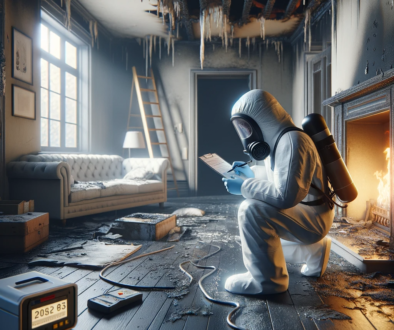Effective Dehumidification Strategies for a Healthier Home Environment
Dehumidification is crucial in maintaining a healthy and comfortable home environment. By effectively controlling indoor humidity, homeowners can prevent a myriad of issues ranging from structural damage to health concerns. Dehumidification isn’t just about comfort; it’s about safeguarding your home and health. If you’re considering home remodeling or renovations, understanding dehumidification is essential. For professional assistance, consider reaching out to Wesmor Inc. services general contractor.
Key Takeaways
- Understanding relative humidity and its impact on indoor air quality.
- Exploring different methods of dehumidification for effective moisture control.
- Implementing strategic ventilation to enhance dehumidification efforts.
Understanding the Basics of Dehumidification
Dehumidification, the process of removing moisture from the air, is essential for maintaining a healthy indoor environment. Excess humidity can lead to various problems, including mold growth and structural damage. It’s particularly crucial in areas prone to high humidity levels. Controlling indoor humidity is not just about comfort but also about preventing health issues. Mold can cause significant health problems, and effective dehumidification is key to mold prevention after water damage.
Common Methods of Dehumidification
There are several methods to dehumidify your home. The most common include air conditioning, desiccant dehumidification, and mechanical dehumidification. Each method has its own set of advantages and can be suited to different needs. Desiccant dehumidification is particularly effective as it can function across a wide range of humidity levels and is energy-efficient. For those dealing with water damage, innovative structural drying methods can be an effective solution.
Strategies for Efficient Dehumidification
Efficient dehumidification is not just about selecting the right equipment; it’s also about smart system design and control. To minimize energy consumption, it’s crucial to use controls that only cool to the desired dewpoint when necessary. An inefficient dehumidification process can lead to excessive energy usage, not just in moisture removal but also in temperature control. For further insights into energy-efficient building designs and systems, visit a reputable educational or government resource.
Challenges and Solutions in Moisture Management
One of the primary challenges in moisture management is identifying issues before they escalate. Condensation is a clear warning sign of excessive moisture. In high-performance homes, especially in humid regions, a comprehensive moisture management strategy is crucial. This includes ensuring proper ventilation and humidity control. Ignoring these signs can lead to health issues. To understand the potential health risks associated with poor indoor air quality, particularly related to mold, visit 5 signs mold is making you sick.
Ventilation and Humidity Control
Proper ventilation is key to effective moisture management. In humid climates, it’s important to balance the air pressure in your home to manage moisture levels effectively. Integrating ventilation with dehumidification can significantly improve the air quality. Solutions like effective strategies for commercial water damage restoration can provide insights into maintaining optimal indoor humidity levels.
FAQs
- What are the main sources of indoor humidity? Indoor humidity can come from various sources including cooking, bathing, and breathing. Outdoor air infiltration and moisture from the ground or building materials can also contribute. Learn more about managing moisture with emergency water extraction steps.
- How does dehumidification contribute to a healthy living environment? Dehumidification helps prevent mold growth, reduces allergens, and maintains a comfortable living environment. For more information on preventing mold, check out mold prevention after water damage.
- What are the differences between various dehumidification methods? Air conditioning, desiccant, and mechanical dehumidification are the primary methods, each with unique benefits. Desiccant dehumidification, for instance, is highly efficient across different humidity levels.
- How does proper ventilation aid in dehumidification? Proper ventilation helps manage moisture levels, especially in humid climates. It’s crucial to balance air pressure for effective moisture control. For more insights, visit effective solutions for commercial water damage restoration.
- What are some common signs of inadequate dehumidification in a home? Signs include condensation on windows, musty odors, and mold growth. Identifying these early can prevent health risks and structural damage. Learn about the signs and solutions at 5 signs mold is making you sick.
Effective dehumidification is key to maintaining a healthy, comfortable, and durable home environment. By understanding the basics of dehumidification, utilizing appropriate methods, and implementing efficient strategies, homeowners can significantly improve their indoor air quality. It’s not just about the immediate comfort; it’s about the long-term health and sustainability of your living space. For those in Mesa, AZ, considering a kitchen remodel or needing expert advice on moisture management, Wesmor Inc. offers professional services to ensure your home remains a safe and comfortable haven.
The Wesmor Inc. Arizona Restoration Crew Is Ready to Assist 24/7
Specializing in water and fire damage repair, alongside expert general contractor services for remodeling and home additions since 1988.




